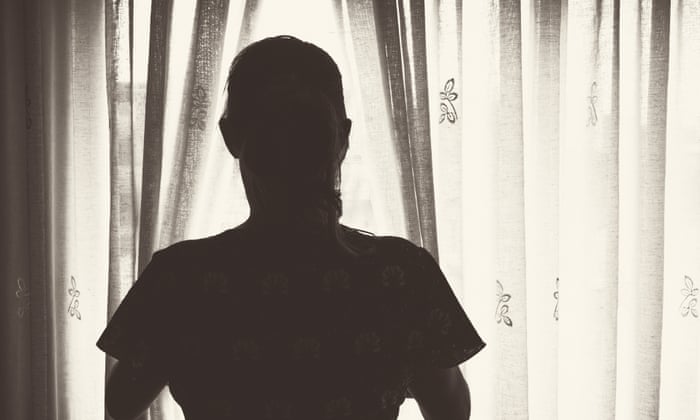
In an more and more polarised world, dividing people into “us v them” and “allies and enemies” has turn into a pervasive mindset.
We organize ourselves as “for” or “in opposition to”, whether or not it’s political events, vaccinations, local weather change or the voice to parliament. We align ourselves with completely different sides of varied wars. The damaging impact of this on society is steadily famous. Nevertheless, the extra refined and dangerous results on our psychological well being are sometimes missed.
There are some apparent benefits to in-group formation. From an evolutionary standpoint, it permits for each the safety and sharing of the group’s assets. It fosters a way of belonging and connection that promotes social cohesion and psychological wellbeing.
It’s pure for the human thoughts to classify and take psychological shortcuts. Analysis highlights the cognitive advantages of this simplification, but it surely additionally warns of the prices – particularly the lack of complexity and nuance. The lack of our skill to suppose past sure or no, in or out, is the lack of an important human capability.
The results of this loss are notably stark when the out-group is seen not solely as completely different, or maybe misguided, but in addition as indiscriminately threatening and hostile. At this level the associated fee to each the person and society escalates and political, ethical, moral and materials points turn into pressing to deal with. Nevertheless, there are additionally essential psychological issues at stake. Regardless of the causes of the unique divide into enemies and allies, these divisions have hidden insidious psychological well being results, as illustrated within the case of Meera.
Meera got here for remedy as a result of she was experiencing anxiousness and panic assaults. These appeared to escalate every time there was the chance that her husband Esai’s household would come from India to go to. Meera and Esai had met one another whereas finding out overseas and had married in opposition to the desires of Meera’s Hindu mother and father and Esai’s Christian mother and father. Esai’s mother and father had been caught up within the anti-Christian assaults that assailed India after 1998. Meera was conscious of those however had not been personally touched by them. She acknowledged her in-laws’ trauma however felt that they have been projecting on to her their generalised resentment. Meera more and more dreaded any interplay along with her in-laws. Her perception that they noticed her because the enemy legitimised her construing them because the enemy.
In working with Meera, I used to be conscious about how many people are embedded in trauma-drenched household and social histories and the enduring results of those. When speaking about her in-laws, Meera turned visibly upset. Even whereas within the security of my room she entered the fight-or-flight emergency state {that a} vital risk produces in us.
Whereas I had little doubt that there was a actuality base to Meera’s perceptions of her in-laws, it didn’t appear to me that the destruction of the wedding was at stake. Nevertheless, within the fight-or-flight state that ensued when she contemplated their arrival, all of the negatives pertaining to them have been amplified and her sense of risk felt justified. Regardless of all of the reassurances that Esai supplied, Meera might solely understand her in-laws as being hellbent on the destruction of their marriage and the denigration of herself. This was regardless of their makes an attempt to fix fences by providing to pay for an anniversary celebration and their monetary contribution to the house Esai and Meera had purchased.
This amplification of damaging perceptions of the “enemy” when in a fearful risk state not solely interferes with extra balanced perceptions; it amplifies damaging feelings too. As Cora Smith notes, extra real looking judgments fly out of the window of the thoughts and damaging feelings come within the door of the guts. Anger, bitterness, hostility and the will for revenge banish the constructive feelings of empathy, compassion and kindness. This banishment has a psychic price as most of us don’t dwell simply with these damaging feelings. We expertise guilt and disgrace which may as soon as once more be coated over with anger.
Whereas the supply of Meera’s anxiousness was definitely fuelled by the actual rejection she had skilled on the outset of her relationship with Esai, it was maintained by her extra paranoid ideas and the conflicted self-image that arose from her personal hostile emotions. Her notion of her in-laws as a risk was intense, as was her battle along with her personal “ugly” feelings.
The remedy course of with Meera was multifaceted. Her vital anxiousness dysfunction concerned working on the physiological stage with mindfulness and meditation. It additionally required work on the interpersonal stage with Esai to achieve his reassurance that the wedding couldn’t be broken by his mother and father. A trauma-informed method was taken to deal with the intergenerational and historic points, and each insight-oriented and cognitive approaches have been used to problem the damaging and self-reinforcing results of us and them pondering. Gaining perception into the hyperlink between this mindset and her anguish and misery proved crucial in ameliorating Meera’s anxiousness and restoring a level of household concord.
Over time Meera slowly gained perspective and the flexibility to see two sides of the story. This supplied appreciable reduction to Meera in regard to her generalised anxiousness and troublesome feelings, in addition to her dread about household visits, which luckily receded to the good thing about all.
*Meera is a fictitious amalgam to exemplify many comparable instances that we see. The therapist is a fictional amalgam of each authors
Prof Gill Straker and Dr Jacqui Winship are co-authors of The Speaking Treatment. Gill additionally seems on the podcast Three Associating during which relational psychotherapists discover their blind spots









